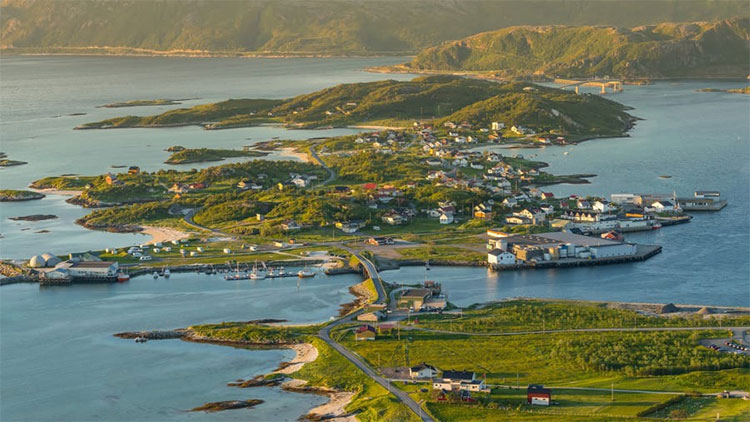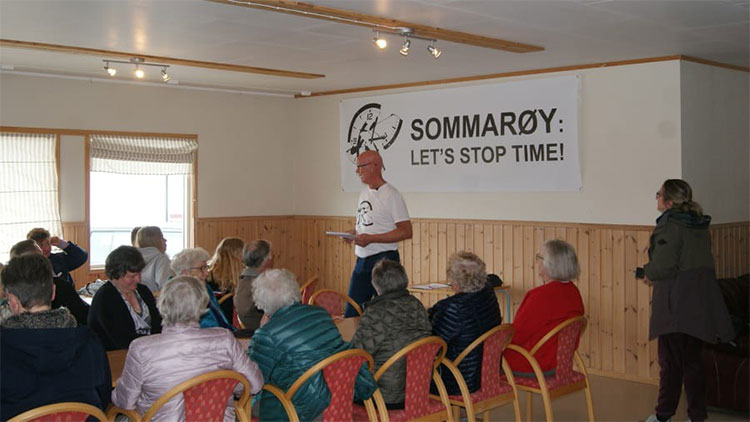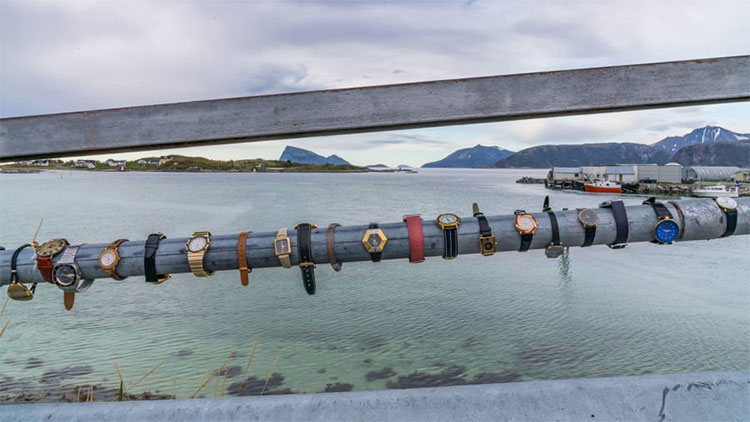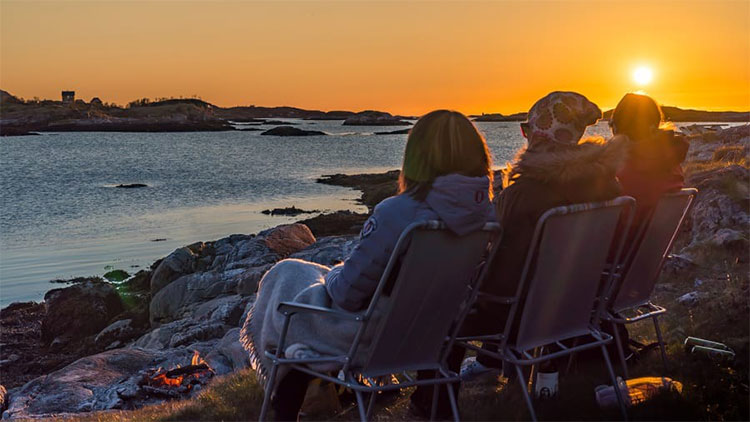A Northern Norwegian Island Launches Campaign to be Recognized as the World’s First Timeless Location
People cannot live without the concept of time. However, there is an island in the world that does not adhere to the notion of time, experiencing polar days and nights annually. This island is Sommarøy.
While polar bears and penguins can adapt to the extreme conditions at the North and South Poles, humans find it challenging to live in the Arctic and Antarctic Circles. Sommarøy, located within the Arctic Circle, has a colder climate as a result.
On Sommarøy Island (meaning “Summer Island”), situated north of the Arctic Circle, the Sun rises continuously from May 18 to July 26, for a total of 69 days.

The island where the Sun shines for a full 69 days. (Photo: CNN).
Kjell Ove Hveding, a resident of the island, stated: “It is always bright. Even at midnight, a time when city folks refer to as ‘2 AM’, you can see children playing soccer, people painting their houses or mowing the lawn, and teenagers swimming. We do everything we like. During the 70 days when the Sun doesn’t set, we enjoy a life without paying attention to time,” emphasizing that the locals do not operate according to traditional timekeeping during the summer.
As a result, the residents cannot follow the routine of working when the Sun rises and resting when it sets; sometimes they start work at 2 or 3 AM and go to bed at noon.
From November to February of the following year, the island experiences 100 days of polar nights. During this period, the Sun does not rise, and everything outside is pitch black. Residents must regularly adjust their sleep patterns to ensure they get enough rest, while also mitigating the effects of polar night on their bodies.
However, since the locals rely on fishing, daytime is the best time for catching fish, so the 90 days of polar night have made it difficult for them to work normally. Living by this “time system” for an extended period can certainly drain residents of their time and energy, and even lead to health issues.
Therefore, to work freely in terms of time and to reduce the impact of polar night on their fishing activities, the locals have continuously voiced their opinions to the relevant authorities, hoping to abolish the current time regime for a better working environment.

The island’s 300 residents gathered in the town hall to propose official recognition as a timeless location. (Photo: CNN).

Island residents disregard clocks during the 69 days of continuous sunlight. (Photo: CNN).
Currently, the islanders hope for official recognition of their proposal. They gathered at the town hall to sign a petition requesting the government recognize Sommarøy as a timeless area. The meeting also included a member of the Norwegian Parliament to collect signatures and discuss the legal and practical challenges surrounding this idea.
After several days, the relevant departments considered the practical issues faced by the residents and ultimately agreed to the proposal.
With permission granted, the local residents collectively discarded their watches at home and hung them in a place for tourists to enjoy. Sometimes they forget about the existence of time, opting to play and work during polar days. During these times, their bodies often feel fatigued, and when they feel exhausted, they stop working and enter a long rest state.

Island residents do not follow traditional timekeeping during the summer.
The residents hope that with this recognition, activities on the island will not adhere to conventional timeframes. Shops and agencies will not have to follow “traditional” opening hours, and school and work hours will be adjusted for greater flexibility.
During polar nights, those who earn a living through fishing cannot work due to the extreme darkness outside, and they will choose to stay indoors during these days.
In general, no matter how astonishing the idea of abolishing time may be, the beauty of Sommarøy Island cannot be denied.
Perhaps for those who have never experienced polar days and nights, it may be difficult to understand what it is like for the Sun to appear or hide for many consecutive days, but the locals here have long been accustomed to it.


















































